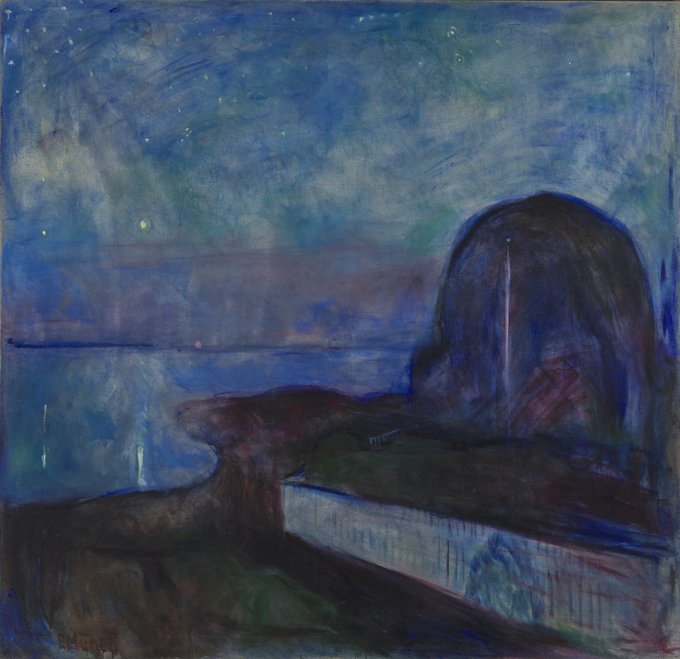Two boys with a bladder. Yes, a bladder.
At the time this was painted, animal bladders were used as toys, either inflated and tossed like balloons or filled with dried peas and shaken like a rattle.
Cool or gross? https://t.co/er5clcdHlN
Libra season!
A great time for traveling and conducting business, bloodletting, and short-term projects...but a bad time for fighting, planting, and building things out of wood.
Valverde was born in Phoenix, AZ, one of 11 kids in a blue-collar family.
His family later moved to Los Angeles, where he would study with Robert Heinecken at UCLA in the 1960s at the height of the Chicano art movement.
Valverde nació en Phoenix, AZ, y fue uno de los 11 hijos de una familia de clase trabajadora.
Luego, su familia se mudó a Los Ángeles, donde estudió con Robert Heinecken en la UCLA en los años 1960s durante el apogeo del movimiento de arte chicano.
The color blue conveys the mysticism and melancholy of the landscape, which seems full of premonitions. An abstract mound at the right represents a clump of trees; a white fence runs diagonally in front. The vaguely defined shape on the fence may be a shadow of two lovers.
"Nature is not only all that is visible to the eye... it also includes the inner pictures of the soul." —Edvard Munch
Norwegian painter Edvard Munch was born on this day in 1863.
Kusakabe sold portraits, landscapes, and scenes of daily life that romanticized Japanese stereotypes of Japan; tourists were eager to see these depictions even as the country moved away from feudalism and toward industrialization in the mid-to-late 19th century.
Sometimes, to learn about a work of art we have to look beneath the surface. Literally.















